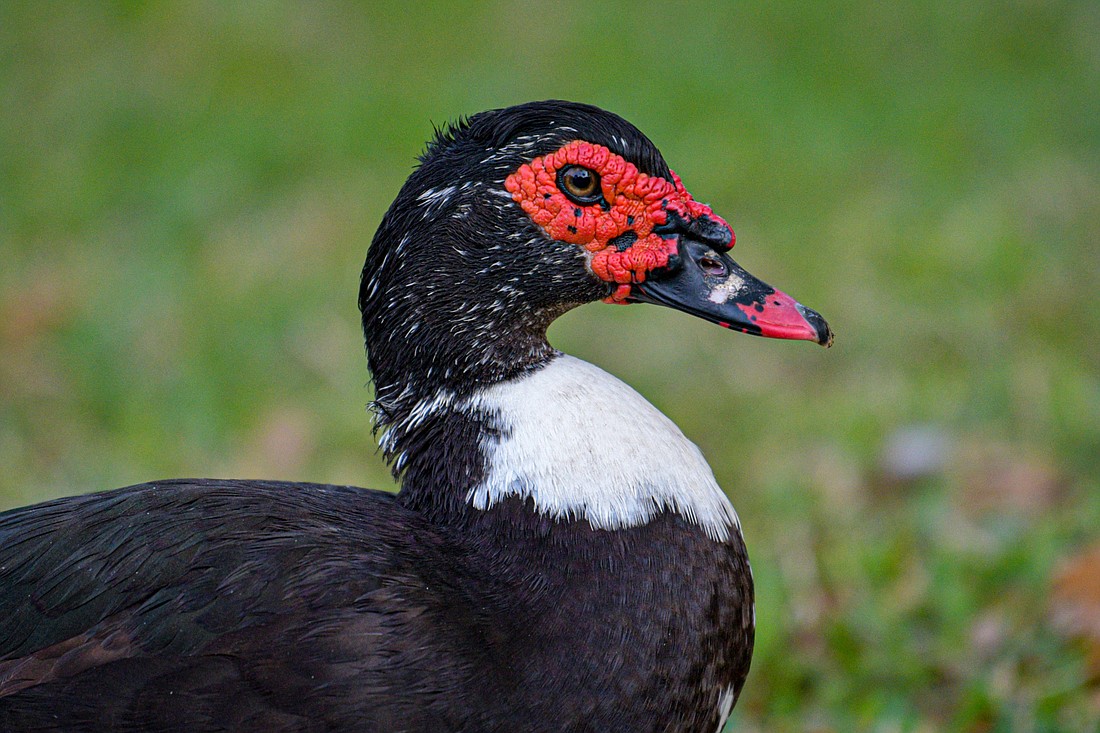- April 30, 2025
-
-
Loading

Loading

These odd ducks hiss instead of quack, have clawed feet (which allow them to move easily on land, as well as roost and nest in trees), and distinctive lumpy red patches of skin on their faces. Muscovy ducks originating from a wild, tropical duck species, native to Central America and South America, and are the only domesticated duck not derived from the wild mallard.
Muscovies were intentionally introduced into the U.S. in the mid-1960s, to “enhance aesthetics” of urban parks. These large ducks are also popular farm animals (for their eggs and as food), and sometimes escape or are released illegally. As they clearly appreciate our sub-tropical climate, large self-sustaining feral populations formed in Florida, and can be found living alongside urban and suburban lakes, ponds and canals throughout the state.
The distinctive red lumps on Muscovy faces are named carnucles. They are fleshy outgrowths on bird faces, often used by males to attract mates. Muscovy carnucles might indeed serve this purpose, as females have smaller patches than males. Their carnucles, however, also contain oil glands. And by rubbing the oil released from the carnucles over their feathers during preening, they clean and waterproof them.
Though they're excellent at pest control, because they'll consume insects (including mosquitoes) at every stage of life, Muscovy ducks are considered an invasive species. They threaten native species, by hybridizing, and competing with them for food and nesting space. If they become accustomed to being fed by humans, they can become a nuisance, aggressively begging for food. By never feeding Muscovy ducks we can encourage them to move on, thus avoiding overcrowding, messy conditions and the potential to spread diseases.
Save our Seabirds is a non-profit organization whose mission is to rescue and rehabilitate sick and injured birds, releasing as many as they can, while educating our community about avoiding injuries and preserving habitats.